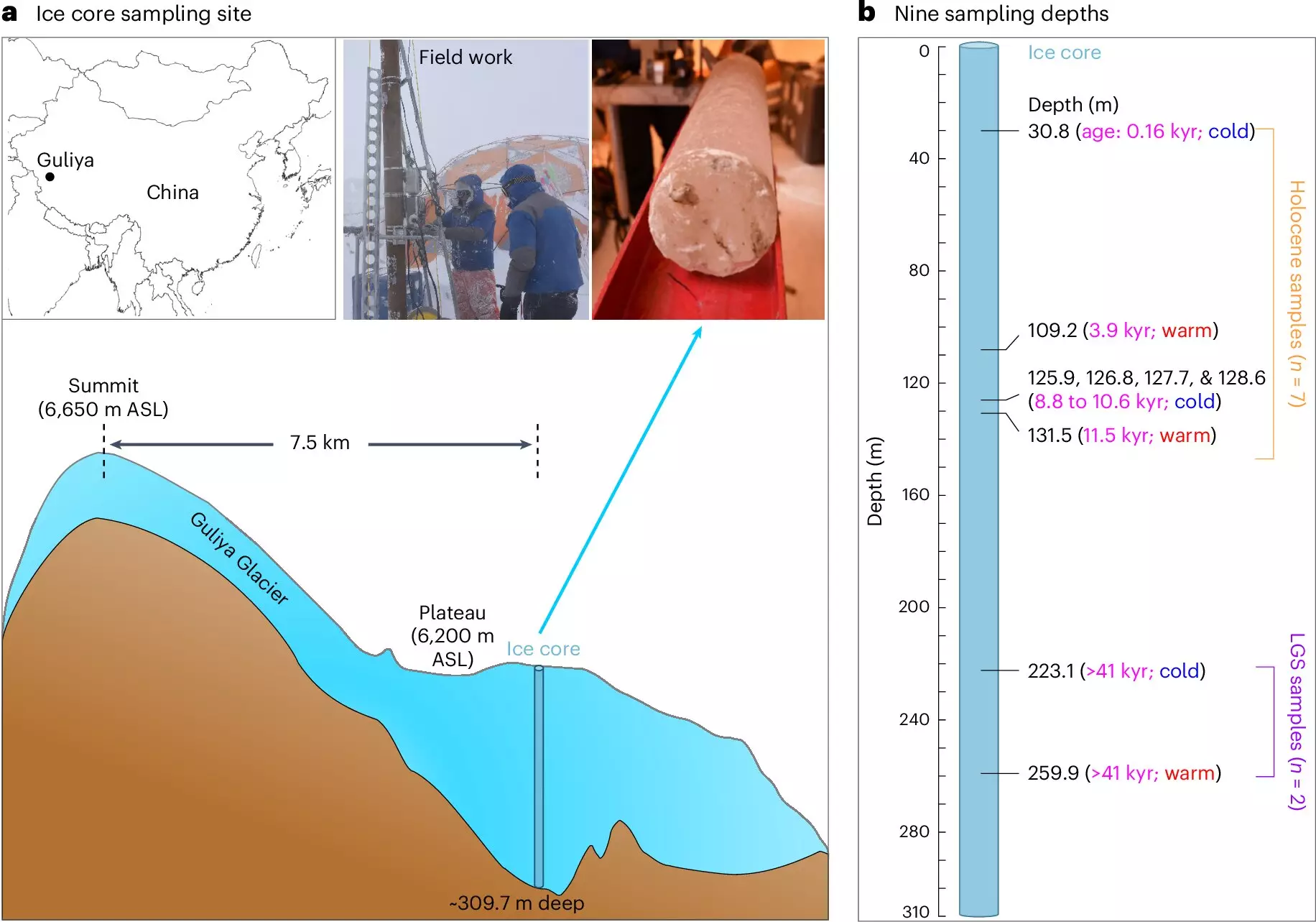The delicate interplay between ancient viruses preserved in glacial ice and Earth’s shifting climate has emerged as a promising field of study. A recent investigation into the Guliya Glacier, perched high in the Tibetan Plateau, has unveiled crucial insights into how these dormant organisms may have shaped, and continue to influence, the planet’s climatic narratives. With a particular focus on understanding ancient virus populations, researchers have recovered nearly 1,700 viral species embedded in ice core samples, most of which are previously unrecognized by science.
Situated at over 20,000 feet above sea level, the Guliya Glacier serves as an extraordinary archive of climatic history, providing snapshots of Earth’s atmospheric conditions over the past 41,000 years. The glacial layers unveil distinct archives that are not only vital for studying long-term climate changes but also serve as guardians of ancient microbial life. The discoveries from the recent study emphasize that these viruses are non-threatening to modern humans, having remained dormant for millennia and likely infecting ancient microbial hosts instead. Yet, their evolutionary tale potentially sheds light on how ecosystems adapt to drastic temperature shifts.
The analysis suggests a significant correlation between the viral populations and past climate transitions, particularly during the substantial climate shift from the Last Glacial Stage to the Holocene, around 11,500 years ago. The insights gained from the preserved genetic material indicate that viruses may have played a role in adapting their microbial hosts to fluctuating environmental conditions as Earth transitioned from cooler to warmer temperatures. While the exact mechanisms at play are still under investigation, foundational knowledge is being established, illuminating the intricate relationships that exist in our ecosystems.
Utilizing advanced sequencing technologies has allowed researchers to unravel the complex genetic signatures of ancient viruses. This study uncovers the intriguing possibility that a quarter of the viral species identified share similarities with known organisms from disparate geographical locations. Such revelations raise questions about the migration of viruses and their hosts across vast regions like the Middle East and the Arctic, emphasizing the interconnectedness of living organisms, even in prehistoric times.
As glacial ice continues to melt at an alarming rate due to climate change, the urgency surrounding the collection of ice cores increases. Each layer of ice represents a unique historical record that, once lost, would diminish our capacity to understand earlier climatic variations and their influence on life. Notably, researchers assert that urgent action is required to safeguard these invaluable resources. The scientific value embedded within these ancient layers could offer tools for predicting how modern viruses might behave in response to ongoing climatic alterations.
The findings from the Guliya Glacier not only deepen our understanding of viral evolution in the context of climate change but also present opportunities for broader scientific applications, including astrobiology. Techniques honed through studying ancient glacial viruses could eventually assist in the quest to uncover life in icy terrains beyond Earth, such as Mars or Europa. The interdisciplinary collaboration observed in this research is indicative of how diverse scientific fields can converge to tackle complex issues facing our planet.
Looking ahead, the necessity to integrate diverse scientific methodologies and emerging technologies is paramount. Researchers emphasize an optimistic outlook, urging that collaborative efforts are essential for acquiring a more comprehensive understanding of our planet’s past climate and the vital role of ancient microorganisms. As the clock ticks down on the availability of glacial ice for such research, there is an urgent call to action for the scientific community to harness available tools and knowledge collectively.
The study of ancient viruses preserved within glacier ice is a groundbreaking endeavor that elevates our comprehension of climate change and its implications on biological evolution. As the research progresses, it holds the potential to unravel the complexities of our Earth’s climatic past while simultaneously informing strategies to approach future climate challenges. The urgent preservation of glacial environments serves not only to protect these invaluable records but also to embrace the array of knowledge they encapsulate.


Leave a Reply